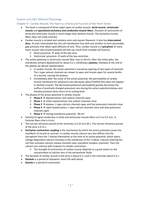Samenvatting
Summary Guyton and Hall - Medical Physiology - Chapter 9, 10, 11, 13, 21(262-264) EN/NL
- Vak
- Thema 6 Ischemie
- Instelling
- Rijksuniversiteit Groningen (RuG)
Samenvatting van leerstof uit Guyton and Hall (hoofdstukken 9, 10, 11, 13, 21). Dit gaat over de prikkelgeleiding en de samentrekking van het hart. Daarnaast is er ook nog een kort stukje over hart-aritmieën. Drie hoofdstukken zijn in het Engels geschreven, twee hoofdstukken in het Nederlands. Dit...
[Meer zien]





